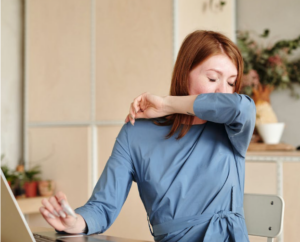
This past winter was a heavy one for respiratory viruses, dominated by surges of RSV, influenza, and Covid-19. But just as it was winding down, a little-known virus that causes many of the same symptoms – a lower lung infection, hacking cough, runny nose, sore throat and fever – was just picking up steam, according to CNN.
Cases of human metapneumovirus, of HMPV, spike this spring, according to the US Centers for Disease Control and Prevention’s respiratory virus surveillance systems. It filled hospital intensive care units with young children and seniors are the most vulnerable to these infections. At its peak in mid-March, nearly 11% of tested specimens were positive for HMPV, a number that’s about 36% higher than average, pre-pandemic seasonal peak of 7% test positivity.
What Is Human Metapneumovirus
Human metapneumovirus (HMPV) is a viral respiratory pathogen that primarily affects infants, young children, older adults, and individuals with weakened immune systems. It was first identified in 2001 and is a member of the Paramyxoviridae family.
HMPV is a common cause of respiratory tract infection, including bronchiolitis and pneumonia, particularly in children. It is a leading cause of hospitalization for respiratory illnesses in young children worldwide. The virus spreads through respiratory droplets when an infected person coughs or sneezes, or through direct contact with contaminated surfaces.
Symptoms of HMPV infection are like those of other respiratory viruses and may include cough, runny nose, nasal congestion, sore throat, fever and difficulty breathing. In severe cases, it can lead to respiratory distress and may require hospitalization, especially in vulnerable populations.
How to Prevent HMPV
Preventing the spread of HMPV involves taking similar precautions as with other respiratory viruses. Here are some preventative measures you can follow:
- Hand hygiene: wash your hands frequently with soap and water for at least 20 seconds, especially after being in public places, before eating, and after coughing, sneezing, or blowing your nose. If soap and water are not available, use hand sanitizer.
- Respiratory etiquette: cover your mouth and nose with a tissue or your elbow when coughing or sneezing. Dispose of used tissues immediately and wash your hands afterward. If using your hands to cover your mouth and nose, avoid touching your face afterward.
- Avoid close contact: avoid close contact with individuals who are sick, especially if they have respiratory symptoms. Keep a distance of at least 6 feet from others, particularly in crowded settings.
- Clean and disinfect: regularly clean and disinfect frequently-touched objects and surfaces, such as doorknobs, light switches, cell phones, and countertops. Consider using MicroShield 360 Pure Technology which is produced on-site, on-demand green cleaning and disinfecting solutions.
- Stay home if sick: If you develop respiratory symptoms, such as cough, fever, or difficulty breathing, it is advisable to stay home, avoid close contact with others, and seek medical advice if necessary.
- Promote good hygiene practices: encourage others to practice good hygiene habits, such as regular handwashing and covering their mouths and noses when coughing or sneezing.
Conclusion
Remember that prevention is crucial not only for your own health but also for the well-being of vulnerable populations who may be more susceptible to severe illness. Stay informed about HMPV and follow the guidance provided by healthcare professionals, and local health authorities in your area.
